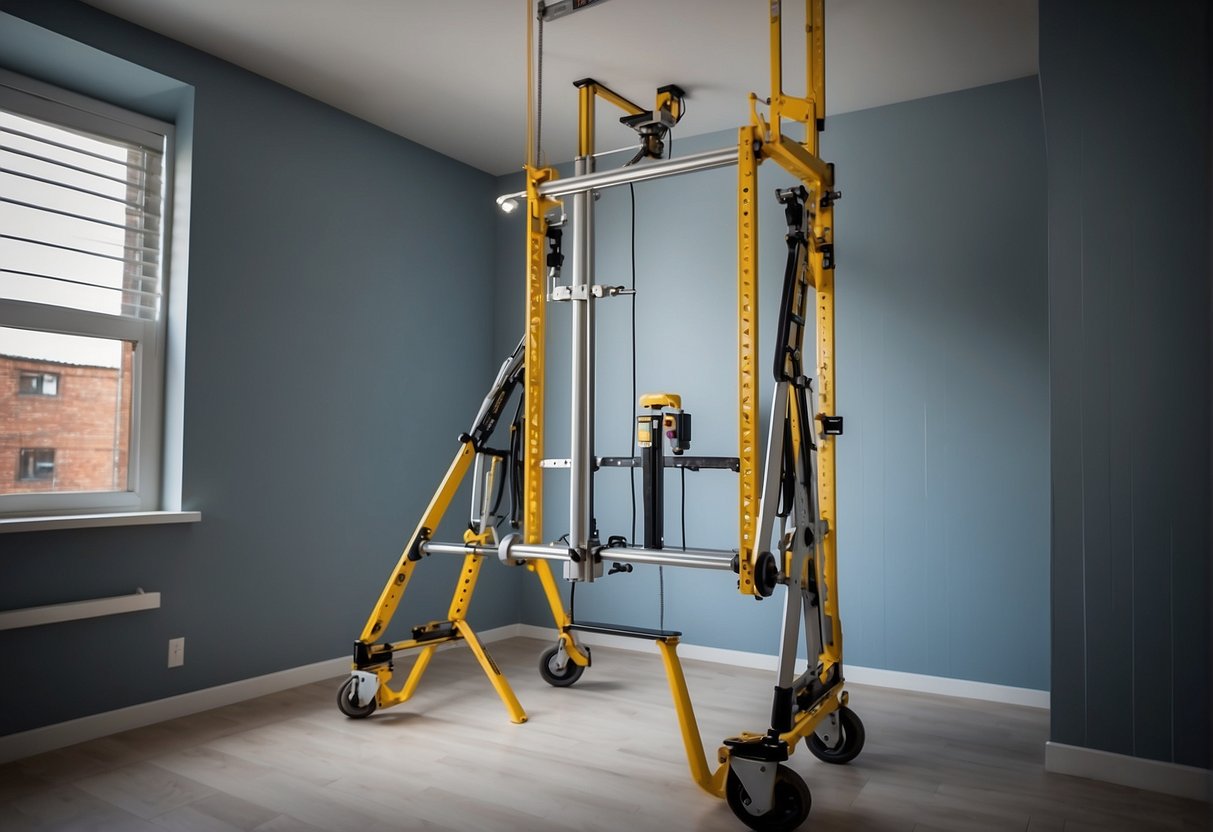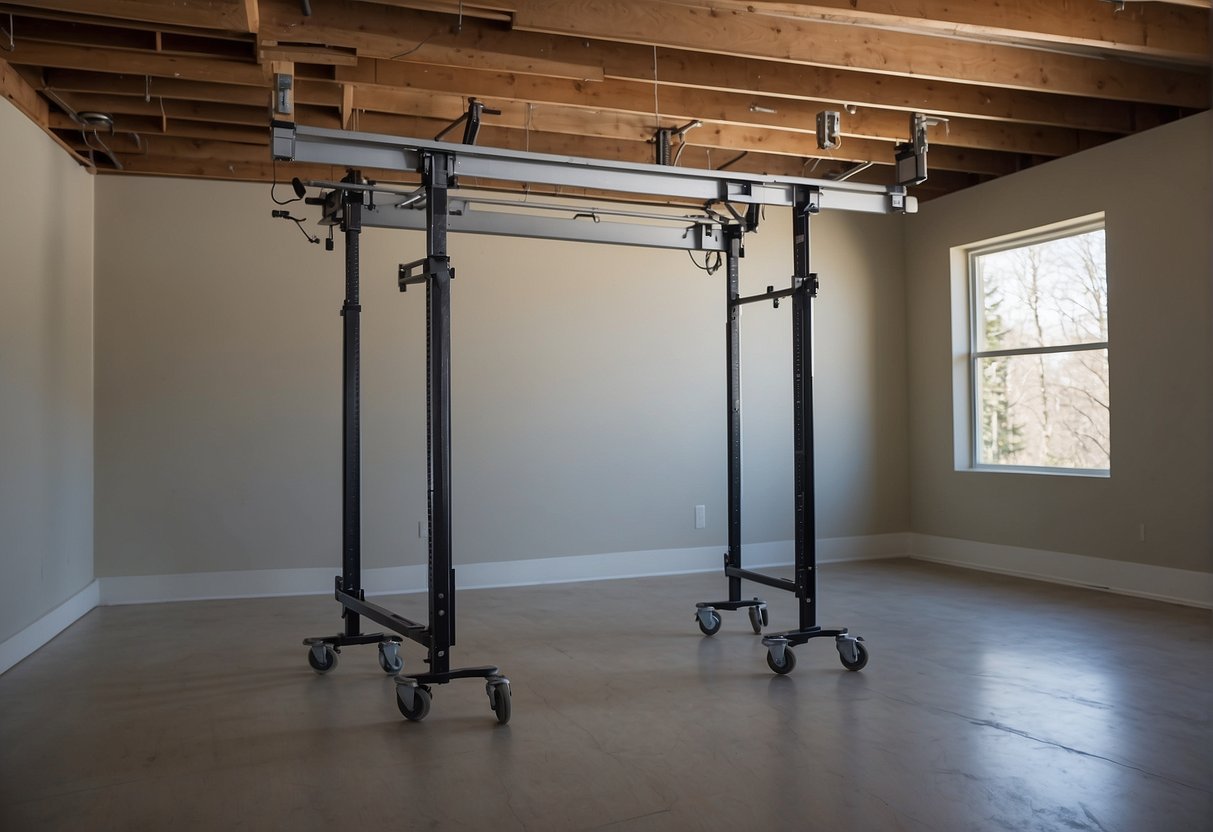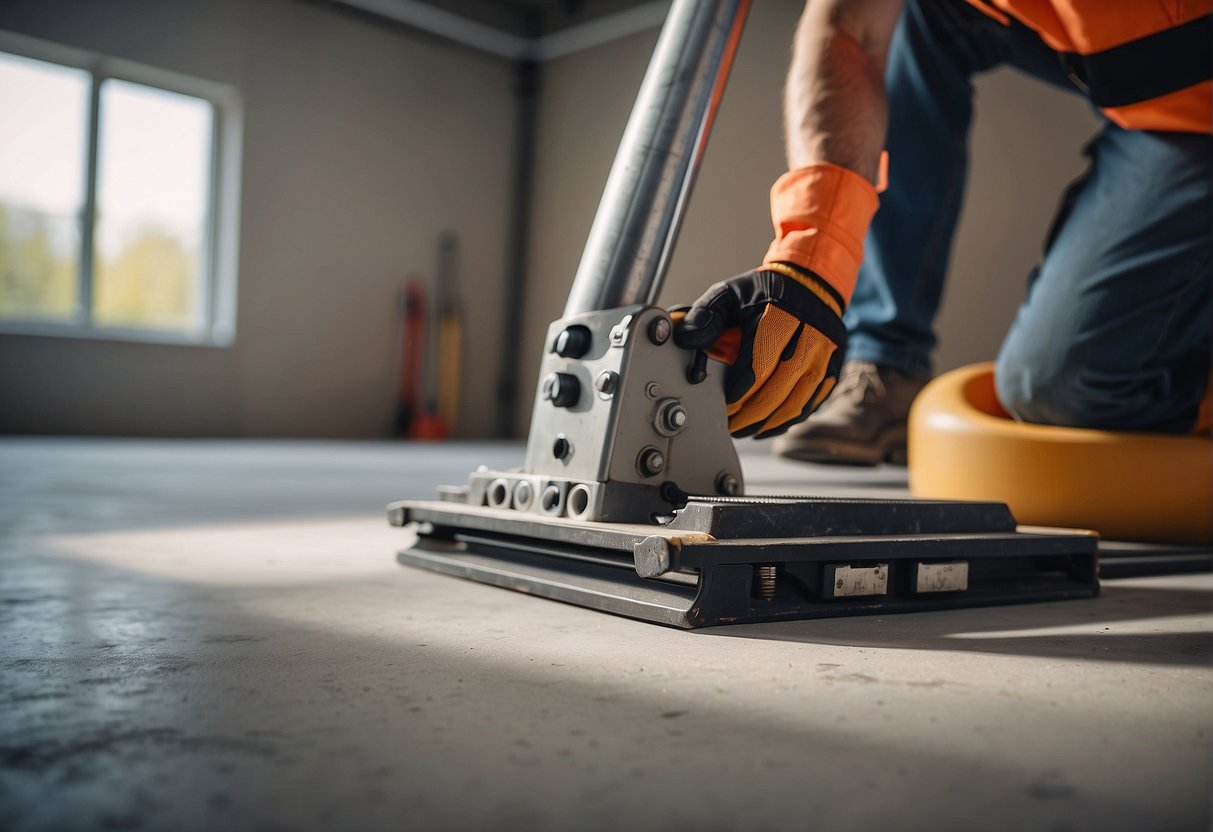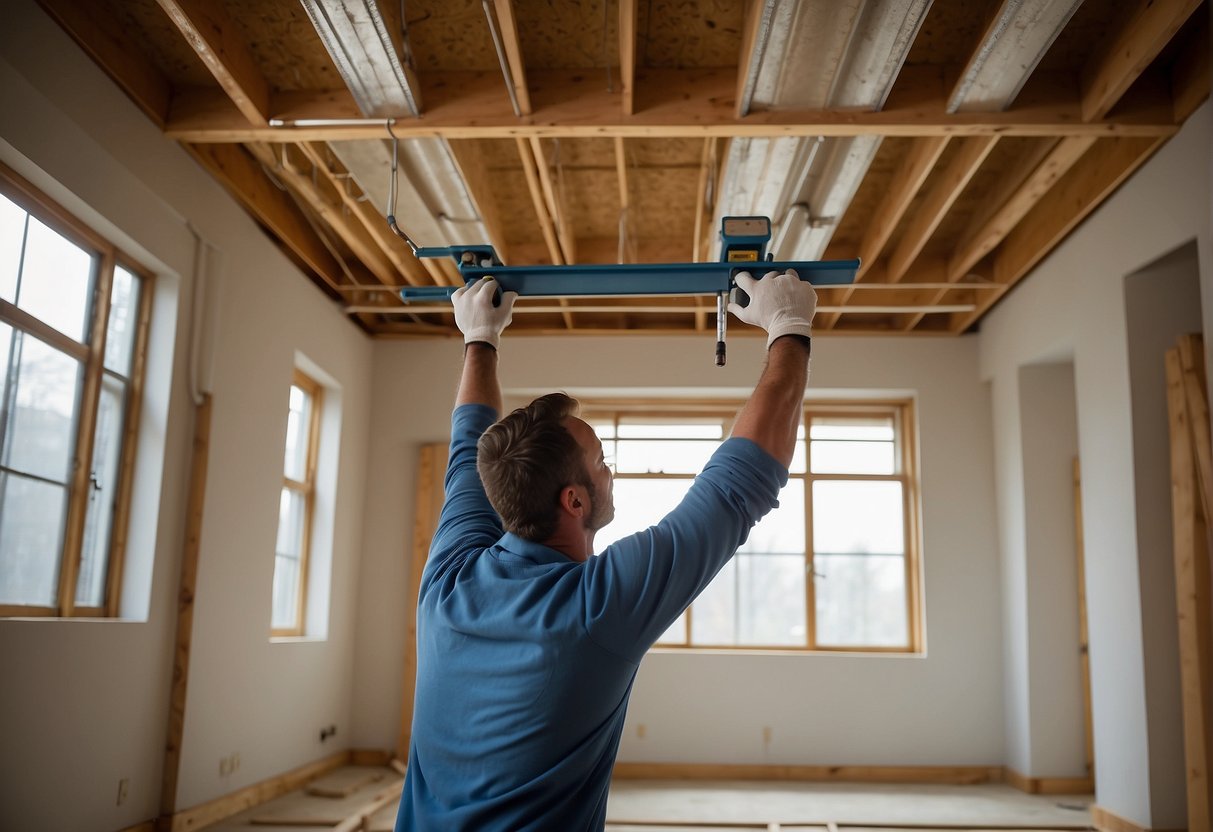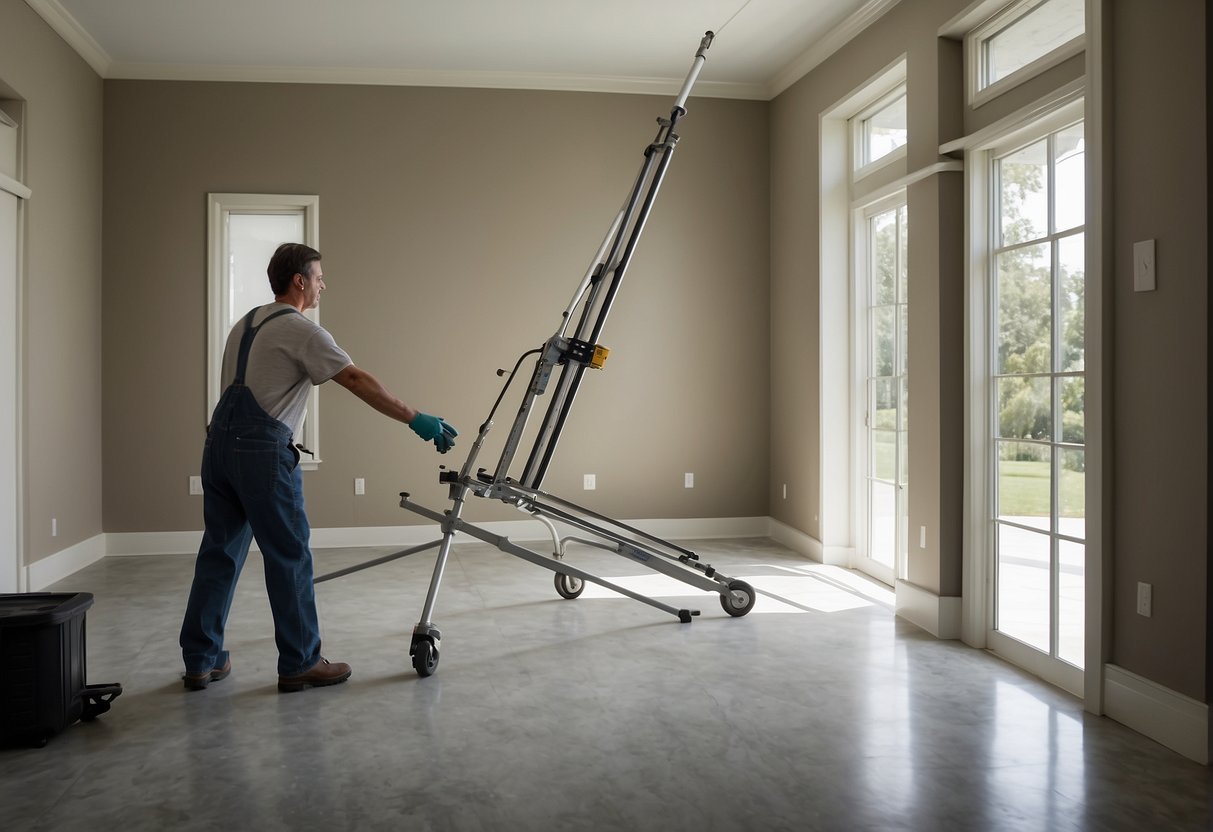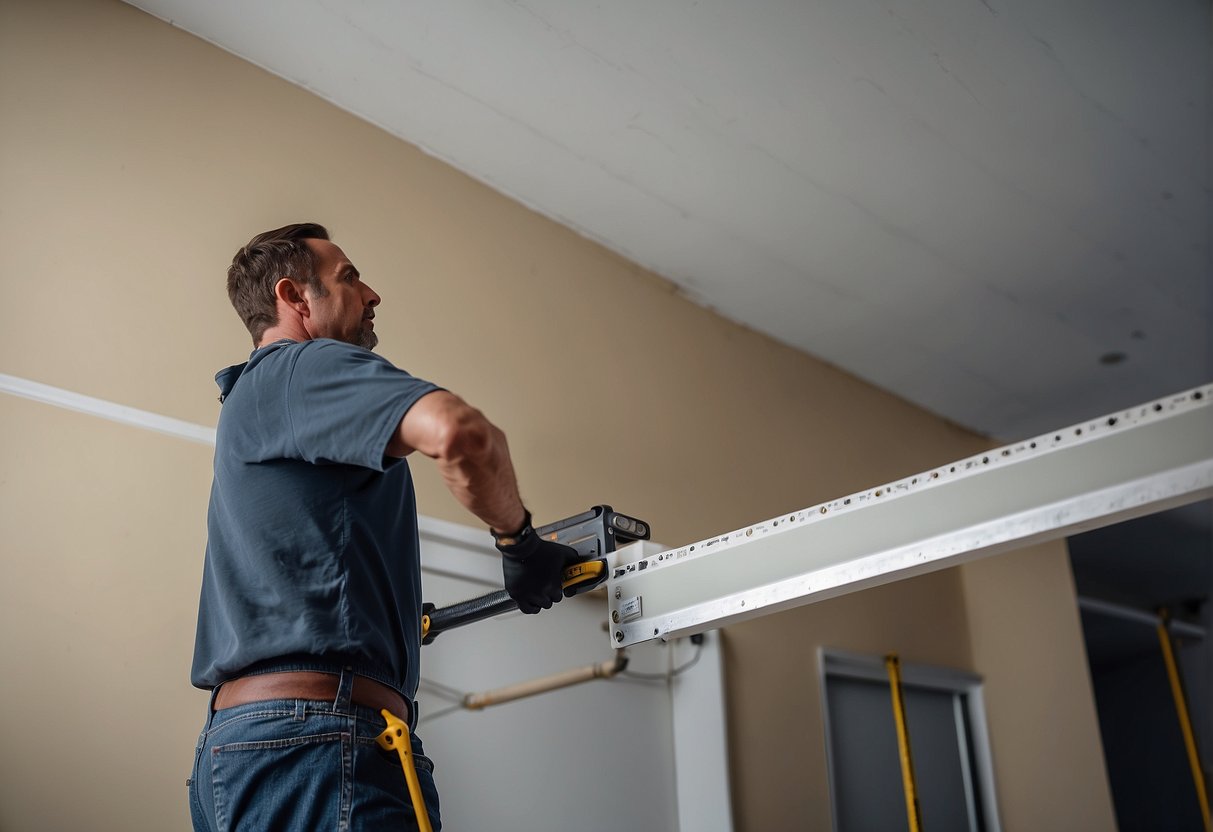Drywall lifts are an essential tool for anyone looking to install drywall on their own. They allow you to easily lift and position drywall sheets onto walls and ceilings without the need for additional help. One common question that arises when using a drywall lift is how high it can go.
The maximum height that a drywall lift can reach depends on the specific model and brand that you are using. Some models can reach up to 16 feet, while others are designed for lower ceilings and can only reach up to 11 or 12 feet. It’s important to choose a drywall lift that is appropriate for the height of your ceilings to ensure that you can complete the job safely and efficiently.
Key Takeaways
- Drywall lifts are a useful tool for DIY drywall installation.
- The maximum height that a drywall lift can reach varies by model and brand.
- Choosing the right drywall lift for your ceiling height is important for safety and efficiency.
Understanding Drywall Lifts
As a professional contractor, I have used drywall lifts on many occasions to help me install drywall sheets quickly and efficiently. Drywall lifts are essential tools that make the installation process much easier and faster, especially when working on high walls or ceilings. In this section, I will explain the different types of drywall lifts and their key features.
Types of Drywall Lifts
There are two main types of drywall lifts: the cradle lift and the winch lift. The cradle lift is the most common type and is designed to hold the drywall sheet in a cradle-like position. The winch lift, on the other hand, uses a winch mechanism to lift the drywall sheet up to the ceiling.
Both types of lifts have a base, a mast, and caster wheels for easy movement. The base is usually made of steel and provides a stable foundation for the lift. The mast is the vertical part of the lift that extends upwards and holds the cradle or winch mechanism. The caster wheels are attached to the base and allow for easy movement of the lift around the job site.
Key Features of Drywall Lifts
Drywall lifts come with a variety of key features that make them more versatile and user-friendly. One of the most important features is the tripod base, which provides extra stability for the lift. Some lifts also come with locking outriggers that can be extended to provide even more stability.
Another important feature is the steel construction, which makes the lift more durable and able to handle heavy loads. The cradle or winch mechanism should also be adjustable to accommodate different sizes of drywall sheets.
In conclusion, drywall lifts are an essential tool for any contractor or DIY enthusiast who wants to install drywall sheets quickly and efficiently. Understanding the different types of lifts and their key features can help you choose the right one for your needs.
Setting Up a Drywall Lift
Assembling a drywall lift is a straightforward process that requires no tools. The lift comes in several pieces that need to be put together to make it functional. Here are the steps to follow to assemble a drywall lift.
Assembly Process
- Begin by laying out all the pieces and checking to ensure that all the parts are present.
- Attach the legs to the base of the lift. Ensure that each of the legs is securely locked in place.
- Next, attach the telescopic arms to the legs. The arms should be adjusted to the desired height.
- Attach the cradle to the telescopic arms. The cradle should be tilted slightly to allow for easy loading of the drywall panels.
- Adjust the collar clamps to secure the drywall panels onto the lift.
Safety Precautions
When assembling a drywall lift, it is important to observe safety precautions to avoid accidents. Here are some safety tips to keep in mind:
- Always wear safety gear such as gloves and eye protection when assembling the lift.
- Ensure that the lift is assembled on a flat surface to prevent it from tipping over.
- Do not exceed the weight limit of the lift. Most lifts can support up to 150 pounds.
- Always engage the brake before loading or unloading the drywall panels.
- Do not strain yourself when lifting the panels onto the lift. Ask for help if necessary.
By following these steps and observing safety precautions, you can assemble a drywall lift easily and safely.
Operating a Drywall Lift
As a professional contractor, I have used drywall lifts to hang drywall on high ceilings. Drywall lifts are designed to lift and position sheets of drywall, making the installation process easier and safer. In this section, I will share my knowledge on how to operate a drywall lift.
Lifting and Positioning
Before operating the drywall lift, it is important to load the lift properly. Make sure that the sheet of drywall is centered on the lift and that the screws are tightened securely. Once the sheet is in place, use the winch handle to extend the lift to the desired height.
To lift the sheet of drywall, use the tilt and roll feature to position the lift close to the wall. Then, use the winch handle to lift the sheet of drywall into place. The lift’s cradle can be tilted to accommodate sloped ceilings or side walls.
Once the sheet of drywall is in position, use the lift’s handle to adjust the angle of the sheet to ensure a proper fit. Then, use screws to secure the drywall to the wall or ceiling.
Adjusting for Different Ceiling Heights
Drywall lifts can be adjusted to accommodate different ceiling heights. To adjust the lift for a higher ceiling, use the winch handle to extend the lift to the desired height. For lower ceilings, use the winch handle to lower the lift.
When adjusting the lift, make sure that the sheet of drywall is securely fastened to the lift and that the lift is stable. Always follow the manufacturer’s instructions for adjusting the lift and never exceed the lift’s weight capacity.
In conclusion, operating a drywall lift requires proper loading, lifting, and positioning of the sheet of drywall. By following the manufacturer’s instructions and taking the necessary safety precautions, you can use a drywall lift to hang drywall on high ceilings with ease.
Choosing the Right Drywall Lift
When it comes to choosing the right drywall lift, there are a few factors to consider. In this section, I will discuss the weight and size considerations, as well as the durability and quality of the drywall lift.
Weight and Size Considerations
One of the most important factors to consider when choosing a drywall lift is its weight and size. You want to make sure that the lift is portable and can be easily moved around the job site. Look for a lift that is lightweight and has wheels for easy transportation. Additionally, make sure the lift can reach the height you need it to. Some lifts have a maximum height of 11 feet, while others can go up to 15 feet or more.
Durability and Quality
Another important factor to consider is the durability and quality of the drywall lift. Look for a lift that is made from high-quality materials and has a sturdy construction. Some lifts are made from steel, while others are made from aluminum. Steel lifts are generally more durable and can handle heavier loads, while aluminum lifts are lighter and more portable.
When purchasing a drywall lift, it is important to buy from a reputable manufacturer. Look for a contractor-grade lift that has a load capacity of at least 150 pounds. Some lifts can handle loads of up to 200 pounds or more, which is ideal for larger jobs.
In conclusion, when choosing a drywall lift, it is important to consider the weight and size of the lift, as well as its durability and quality. Look for a lift that is portable, has a maximum height that meets your needs, and is made from high-quality materials. Purchase from a reputable manufacturer and choose a contractor-grade lift with a load capacity of at least 150 pounds.
Additional Drywall Tools and Techniques
Drywall Stilts and Roll Lifters
When working on a large drywall project, it is essential to have the right tools to make the job easier and safer. One of the most useful tools for drywalling is a pair of stilts. Drywall stilts are adjustable platforms that allow you to work at higher heights without the need for a ladder. They come in various sizes and heights, and you can adjust them to fit your needs.
Another useful tool for drywalling is a drywall roll lifter. This tool is designed to help you lift and move large rolls of drywall with ease. It has a sturdy frame and wheels that make it easy to maneuver, even in tight spaces. With a drywall roll lifter, you can quickly move drywall sheets from one location to another without straining your back.
Fastening and Finishing Tools
When it comes to fastening and finishing drywall, there are several tools you’ll need to get the job done right. One of the most essential tools is a screw gun. A screw gun is a power tool that allows you to quickly and easily insert screws into drywall. It is much faster than using a traditional screwdriver, and it ensures that the screws are flush with the drywall.
Another tool that you’ll need for fastening drywall is a drywall hammer. This hammer has a flat head and a curved claw that is designed to drive nails into drywall without damaging the surface. It is an excellent tool for securing drywall to studs or other surfaces.
When it comes to finishing drywall, you’ll need a few tools to help you achieve a smooth, seamless finish. One of the most important tools is joint tape. Joint tape is used to cover the seams between drywall sheets, and it helps to create a smooth surface for painting or wallpapering.
Another tool that you’ll need for finishing drywall is mud. Mud is a type of joint compound that is used to fill in gaps and cover screws or nails. It is applied with a trowel and smoothed out to create a seamless finish.
In conclusion, when it comes to drywalling, having the right tools and techniques can make all the difference. Drywall stilts and roll lifters can help you work at higher heights without the need for a ladder, while screw guns and drywall hammers are essential for fastening drywall to studs. Joint tape and mud are necessary for achieving a smooth, seamless finish. Whether you’re working on a DIY project or a professional job, having the right tools and techniques can help you get the job done right.
Frequently Asked Questions
What is the maximum reach of a standard drywall lift?
A standard drywall lift can usually reach up to 11 feet, which is sufficient for most residential and commercial ceilings. However, some models can reach up to 15 feet or more, depending on the manufacturer and model.
Can a drywall lift be extended to accommodate higher ceilings?
Yes, some drywall lifts can be extended to accommodate higher ceilings. However, it is important to note that extending the lift can reduce its stability and increase the risk of accidents. It is essential to follow the manufacturer’s instructions when using a drywall lift and to take all necessary safety precautions.
Are there rental options for high-capacity drywall lifts?
Yes, there are rental options for high-capacity drywall lifts. Most rental companies offer a range of drywall lifts that can accommodate different weight capacities and ceiling heights. Renting a drywall lift can be a cost-effective option for those who do not want to purchase a lift for a one-time project.
What are the size limitations for a drywall panel using a lift?
The size limitations for a drywall panel using a lift depend on the weight capacity of the lift. Most standard drywall lifts can handle panels up to 4 feet by 16 feet in size. However, some models can accommodate larger panels or multiple smaller panels.
Is it cost-effective to rent a drywall lift for a one-time project?
Yes, renting a drywall lift can be a cost-effective option for a one-time project. Purchasing a drywall lift can be expensive, and it may not be worth the investment if it will only be used once. Renting a lift can save money and provide access to higher-capacity lifts that may not be necessary for future projects.
What safety considerations should be taken when operating a drywall lift?
When operating a drywall lift, it is essential to follow all safety precautions to prevent accidents and injuries. Some important safety considerations include wearing appropriate protective gear, such as gloves and safety glasses, ensuring that the lift is on a level surface, and securing the panel to the lift before lifting it. It is also important to follow the manufacturer’s instructions and to never exceed the weight capacity of the lift.

Hi, I’m Sal Muller of Tooltrip.com. My DIY experience led me to understand essential power tools for home projects. Tooltrip.com guides enthusiasts and professionals in choosing right tools for any job. I provide concise top tool reviews for easier, efficient DIY.

